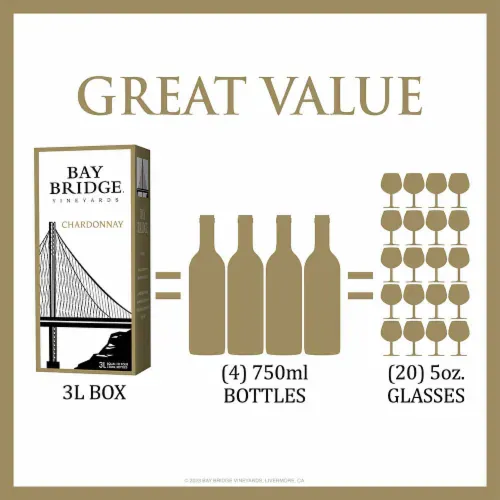Red wine with high alcohol content has been a topic of interest for wine enthusiasts and connoisseurs alike. The alcohol content of wine is measured in ABV (alcohol by volume), and the average ABV for red wine is around 13.5%. However, some red wines have a much higher ABV, ranging from 14% to 20%.
Red wine with high alcohol content is often associated with bold and intense flavors, making it a popular choice for those who prefer a stronger taste in their wine. Some of the most popular red wines with high alcohol content include Zinfandels, Sherry, and Syrahs, particularly those that are labeled as "fortified." These wines are often aged longer and have a higher concentration of alcohol, resulting in a more complex flavor profile.
While red wine with high alcohol content may be favored by some, it is important to consume it in moderation. The high alcohol content can lead to quicker intoxication and may have negative health effects if consumed in excess. As with any alcoholic beverage, it is recommended to enjoy red wine with high alcohol content responsibly and in moderation.
Understanding Alcohol Content in Wines
What is ABV
ABV stands for Alcohol by Volume, which is a measure of the percentage of alcohol in a given volume of wine. It is expressed as a percentage and can range from as low as 5% to as high as 20% or more. The ABV of a wine is determined by the amount of sugar in the grape juice, the type of yeast used during fermentation, and the length of the fermentation process.
Alcohol by Volume (ABV) Vs. Alcohol Content
Alcohol content is the total amount of alcohol in a given volume of wine. It is not the same as ABV, which is a measure of the percentage of alcohol in a given volume of wine. The alcohol content of a wine is determined by multiplying the ABV by the volume of the wine. For example, a 750ml bottle of wine with an ABV of 14% would have an alcohol content of 105ml.
Factors Influencing Alcohol Content
Several factors can influence the alcohol content of wine, including the type of grape, the amount of sugar in the grape juice, the type of yeast used during fermentation, and the length of the fermentation process. Additionally, factors such as heat, climate, and harvest can also impact the alcohol content of wine.
During the fermentation process, yeast consumes the sugar in the grape juice and produces alcohol as a byproduct. The more sugar in the grape juice, the higher the potential alcohol content of the wine. However, the alcohol content can be controlled by stopping the fermentation process before all of the sugar is consumed.
In conclusion, understanding alcohol content in wine is important for estimating the wine's flavor profile, tracking how much alcohol you're consuming, and storing wine appropriately. The ABV of a wine is determined by the amount of sugar in the grape juice, the type of yeast used during fermentation, and the length of the fermentation process. The alcohol content of a wine is determined by multiplying the ABV by the volume of the wine. Several factors can influence the alcohol content of wine, including the type of grape, the amount of sugar in the grape juice, the type of yeast used during fermentation, and the length of the fermentation process.
High Alcohol Red Wines
Characteristics of High Alcohol Red Wines
High alcohol red wines are known for their full-bodied flavor and high alcohol content, typically ranging from 14% to 20% ABV. These wines are made using grapes with a higher sugar concentration, which results in a higher alcohol content during fermentation.
The higher alcohol content in these wines can lead to a more intense and complex flavor profile, with notes of dark fruit, chocolate, and spice. However, it can also result in a higher level of heat in the back of the throat, which some drinkers may find overwhelming.
Winemakers often use techniques such as extended maceration and oak aging to balance out the alcohol content and create a more harmonious flavor profile.
Popular High Alcohol Red Wine Varietals
There are several varietals of red wine that are known for their high alcohol content. Here are a few popular examples:
Cabernet Sauvignon: This grape is known for producing full-bodied, tannic wines with high alcohol content. Cabernet Sauvignon is often blended with other varietals to create complex, flavorful wines.
Syrah/Shiraz: This grape is known for producing rich, full-bodied wines with high alcohol content. Syrah is often blended with other varietals to create complex, flavorful wines.
Zinfandel: This grape is known for producing bold, fruit-forward wines with high alcohol content. Zinfandel is often aged in oak barrels to add complexity and balance out the alcohol content.
Malbec: This grape is known for producing bold, tannic wines with high alcohol content. Malbec is often blended with other varietals to create complex, flavorful wines.
Petite Sirah: This grape is known for producing full-bodied, tannic wines with high alcohol content. Petite Sirah is often blended with other varietals to create complex, flavorful wines.
Muscat: This grape is known for producing sweet, dessert-style wines with high alcohol content. Muscat is often used in late harvest dessert wines.
Madeira: This fortified wine from the Portuguese island of Madeira is known for its high alcohol content and complex flavor profile. Madeira is often used in cooking, but can also be enjoyed as a dessert wine.
Port/Sherry: These fortified wines from Portugal and Spain, respectively, are known for their high alcohol content and complex flavor profiles. Port is often enjoyed as a dessert wine, while Sherry can be enjoyed as an aperitif or dessert wine.
Banyuls: This fortified wine from the Banyuls region of France is known for its high alcohol content and rich, complex flavor profile. Banyuls is often enjoyed as a dessert wine.
Tawny: This style of Port wine is known for its high alcohol content and nutty, caramel-like flavor profile. Tawny Port is often aged in oak barrels to add complexity.
Overall, high alcohol red wines can be a great choice for those looking for a bold, complex flavor profile. However, it's important to drink them in moderation and be aware of the higher alcohol content.
Effects of High Alcohol Content
Red wine is known for its rich flavor profile and complex taste. However, the alcohol content in wine can significantly affect the flavor and taste of the wine. High alcohol content can also have an impact on human health. In this section, we will explore the effects of high alcohol content in red wine.
On Flavor and Taste
The alcohol content in wine affects the flavor and taste of the wine. High alcohol content can result in a sweeter taste, a fuller body, and a higher level of alcohol burn. It can also result in a loss of balance and complexity in the wine. The wine may taste hot, with an overwhelming sensation of alcohol, and a lack of fruit flavors.
The flavor profile of the wine can also be affected by high alcohol content. The wine may have a jammy or raisiny flavor profile. This is because the high alcohol content can cause the grapes to ripen quickly, resulting in higher sugar levels in the grapes. The higher sugar levels can lead to a jammy or raisiny flavor profile in the wine.
On Health
High alcohol content in red wine can have negative effects on human health. Consuming too much alcohol can lead to a range of health issues, including liver damage, high blood pressure, and an increased risk of certain cancers. Men are more likely to experience negative health effects from consuming alcohol than women.
It is important to note that the standard drink size for wine is 5 ounces, and the recommended daily intake of wine is one glass per day for women and two glasses per day for men. It is recommended to consume red wine in moderation to avoid negative health effects.
In conclusion, high alcohol content in red wine can have both positive and negative effects. It can result in a sweeter taste and a fuller body, but it can also lead to a loss of balance and complexity in the wine. It is important to consume red wine in moderation to avoid negative health effects.
Comparisons and Contrasts
High Alcohol Red Wine Vs. Low Alcohol Red Wine
Red wine is a popular alcoholic beverage that comes in a variety of alcohol content. Some red wines have a high alcohol content, while others have a low alcohol content. High alcohol red wines are those that have an alcohol content of 14% or more, while low alcohol red wines have an alcohol content of less than 12%.
One of the main differences between high and low alcohol red wines is the taste. High alcohol red wines tend to be more robust and full-bodied, while low alcohol red wines are lighter and fruitier. Additionally, high alcohol red wines tend to have a more intense flavor and aroma, while low alcohol red wines have a more subtle taste and aroma.
Another difference between high and low alcohol red wines is the aging process. High alcohol red wines generally require a longer aging process than low alcohol red wines. This is because the higher alcohol content can help to preserve the wine and give it a longer shelf life.
High Alcohol Red Wine Vs. Other Alcoholic Beverages
When it comes to alcoholic beverages, red wine is not the only option. There are many other alcoholic beverages, including white wine, rosé, sparkling wine, beer, and spirits such as vodka.
Compared to other alcoholic beverages, high alcohol red wine tends to have a more complex flavor profile. This is because the higher alcohol content can help to extract more flavor from the grapes used to make the wine. Additionally, high alcohol red wines are often aged for a longer period of time, which can also contribute to their complex flavor profile.
Compared to distilled spirits such as vodka, high alcohol red wine tends to have a lower alcohol content. Vodka typically has an alcohol content of around 40%, while high alcohol red wine usually has an alcohol content of around 14% to 16%. This means that vodka is generally more potent than high alcohol red wine.
In comparison to beer, high alcohol red wine has a higher alcohol content. Beer usually has an alcohol content of around 4% to 6%, while high alcohol red wine can have an alcohol content of up to 20%. However, beer and high alcohol red wine are both popular choices for social gatherings and can be enjoyed in a variety of settings.
Choosing and Serving High Alcohol Red Wine
How to Choose
When selecting a high alcohol red wine, it is essential to consider the alcohol content. Most red wines have an alcohol content of around 12-14%, but high alcohol red wines can have an alcohol content of 15% or higher. It is important to note that the higher the alcohol content, the more intense the wine's flavor will be.
One way to choose a high alcohol red wine is to look for reviews from wine critics. Critics often rate wines based on their alcohol content and can provide recommendations on the best high alcohol red wines. It is also helpful to consider the region where the wine was produced. Warmer regions tend to produce grapes with a higher sugar content, which can result in a higher alcohol content in the wine.
How to Serve
When serving high alcohol red wine, it is essential to consider the glassware. A larger bowl-shaped glass is recommended to allow the wine to breathe and to enhance the wine's aroma. It is also recommended to serve the wine at a slightly cooler temperature to balance the alcohol content.
It is important to note that high alcohol red wine is best served with food. The intense flavors and high alcohol content can be overwhelming on their own, but pairing the wine with a hearty meal can help balance the flavors. It is recommended to pair high alcohol red wine with rich and savory dishes such as steak, lamb, or pasta with a tomato-based sauce.
In summary, when choosing and serving high alcohol red wine, it is important to consider the alcohol content, reviews from wine critics, and the region where the wine was produced. When serving, use a larger bowl-shaped glass and pair the wine with a hearty meal to balance the flavors.
Conclusion
Determining the alcohol content of a red wine is an essential part of winemaking, as even minor deviations from the desired alcohol by volume (ABV) can have drastic implications on the final product. Red wines with high alcohol content have become increasingly popular, but winemakers must exercise precision and accuracy to ensure the best results.
There are various methods to determine ABV, such as using a hydrometer, ebulliometer, or distillation. However, each method requires precision and accuracy to ensure the best results. Winemakers must also consider the impact of alcohol content on the wine's taste, aroma, and mouthfeel.
Red wines with high alcohol content can have a fuller body and bolder flavors, but they can also be overwhelming and unbalanced. It is crucial to strike a balance between alcohol content and other elements of the wine, such as acidity, tannins, and fruitiness.
The trend towards higher alcohol content in red wines is a global phenomenon, with California's winemakers being one of the main culprits. However, there is a growing concern about the health implications of consuming high alcohol wines regularly.
Moderate wine consumption, including red wine, has been associated with health benefits, particularly when included in a Mediterranean diet model. However, excessive alcohol consumption can lead to various health problems, such as liver disease, high blood pressure, and cancer.
In conclusion, red wines with high alcohol content can be enjoyable and flavorful, but winemakers must exercise precision and balance to ensure the best results. Consumers should also be aware of the potential health implications of consuming high alcohol wines regularly and practice moderation.









Member discussion